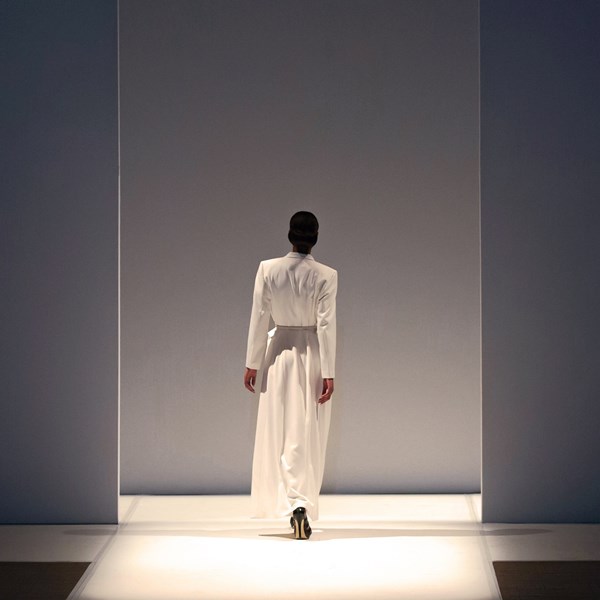Much of the value in high-end fashion brands comes from the exclusivity of their products. Protecting themselves through appropriate intellectual property is therefore paramount to their value. But this is not without its challenges, particularly in relation to the protection of shapes, as shown by a recent case relating to the iconic Moon Boot.
Registered trade marks have a number of benefits over other IP rights. In particular, they can, in theory, subsist indefinitely, whereas all other IP rights are time-limited. The oldest UK trade mark, the Bass triangle (UK trade mark number 0001), was registered in 1876 and is still enforceable today.
The “essential function” of a trade mark is that it guarantees the origin of a product. This is most evident with brand names or logos - if you see a brand name, you usually know that its intention is to denote where a product has come from, even if you have never heard of that brand before.
But the position is more difficult in relation to “non-traditional” marks, such as a product’s shape or colour. If consumers do not rely upon a shape or colour as a guarantee of origin, then it cannot be registered as a trade mark. Some products, such as the shape of the Hermès Birkin handbag, and the colour of the soles of Louboutin shoes, have been successfully registered as trade marks, but these are relatively few and far between. Even where such marks are registered, they are vulnerable to being attacked when enforced by their owner, making infringement proceedings more costly and risky than would otherwise be the case.
Tecnica Group, creator of the iconic Moon Boot, has suffered from copycat products for many years. Unfortunately, but not unrelatedly, its trade mark protecting the shape of its Moon Boot has now been found to lack distinctiveness in relation to footwear, and therefore to be invalid.
GET THE BOOT
Tecnica has lost a lengthy battle defending its three-dimensional trade mark for its iconic Moon Boot, failing to prove that the relevant public sees the shape of the boot as a designator of origin for boots, and therefore that its mark performs its essential function.
Tecnica launched the Moon Boot in the early 1970s in response to the moon landing. Since then, they have been known worldwide as the quintessential après-ski boot, and have recently made a retro revival as the It-Girl’s winter boot of choice. Tecnica applied to register the boot as a shape mark, below, in 2011:

The EU General Court has now held that this trade mark did not depart significantly from the norms and customs of the après-ski boot sector as it was in 2011. Accordingly the boot lacked the required distinctiveness to be a valid trade mark in relation to footwear, and was invalidated.
As described above, the greatest hurdle for applicants for shape trade marks to overcome is that of distinctiveness.
Brand names (particularly where they are a made up word), or logos, are likely to be immediately perceived by the public as a designator of origin; they are often inherently distinctive.
The public is not, however, in the habit of considering the shape of a product to be a part of its branding – usually, the shape of a product is simply its shape. In order to acquire distinctiveness, the brand must educate the public (for instance via advertising) that the shape of the product is a brand designator. This can take a long time.
Arguably, in the 40 years between Tecnica launching the Moon Boot and applying to register its trade mark, it had educated the public that the shape of its boot was important. However, in this period other companies launched similar boots, and Tecnica did not do enough to stop the proliferation of these competitor boots through the market. By the time Tecnica applied for its trade mark, the shape was therefore not unusual enough to guarantee the origin of the Moon Boot, so the registration was found to be invalid.
Brands with designs which are core to their business may well want to register these as trade marks due to the indefinite duration of protection. However, as the Moon Boots case shows, waiting to achieve distinctiveness before acquiring protection can leave a brand with a lack of clarity as to its protection.
WHAT A-BOOT OTHER IP RIGHTS?
So, what protection is available to fashion houses which can be obtained more quickly than a trade mark?
Registered design rights protect the appearance of a product (whether the shape, the decoration, or other aspects of its appearance). They are easy and cheap to register, and the procedure for obtaining them does not usually come with a time-consuming and potentially expensive examination process. The downside of this is that enforcing them can be difficult; they are often found to be invalid, or to lack a sufficient scope of protection to be infringed. Furthermore, if a fashion house releases numerous variants of a design, registering them all can be costly and difficult to manage. Registered designs only subsist for up to 25 years.
The UK and EU each offers unregistered design protection. EU unregistered design requires a new design to first be revealed to the public in the EU, and to “create a different overall impression” to previous designs on the market or publicly available. It only lasts 3 years, but can protect both the shape and any 2D decoration of a design against copying. Brands should consider whether the availability of this protection means that they should first display new designs in the EU.
The UK, post-Brexit, offers a protection equivalent to EU unregistered design, but this only provides protection in the UK (rather than across a larger territory such as the EU).
The UK also offers a second form of unregistered design protection, which only protects “original” 3D designs against copying. It will not, for example, protect 2D design elements such as decorative elements or wording. However, it subsists for 15 years, and where the new design is something like a boot, it may therefore provide more benefit than the EU protection (or the UK equivalent) discussed above.
In some instances, copyright also provides fashion brands with protection in relation to certain design aspects of products, reflecting the creativity of the designer. In 2021, Tecnica won a copyright case in Italy against influencer Chiara Ferragni, who produced an lookalike boot under her brand name. Whilst Ferragni’s boots displayed her prominent logo, albeit in the same position as the Moon Boot word mark, and were surfaced with glitter, the Italian court deemed them to infringe copyright of the Moon Boot. That said, copyright protection differs substantially from country to country, and it is very possible that the UK courts would have decided this case differently.
This article was originally published by the Luxury Law Alliance.







